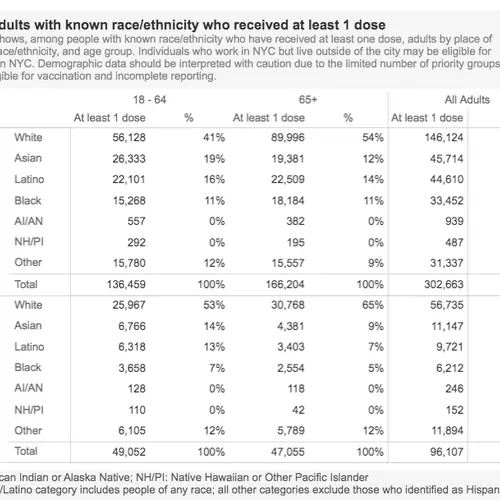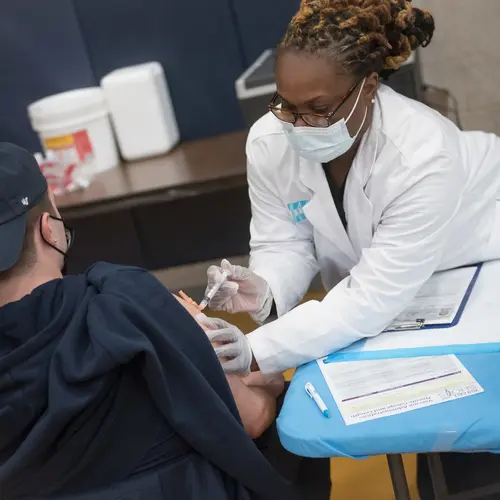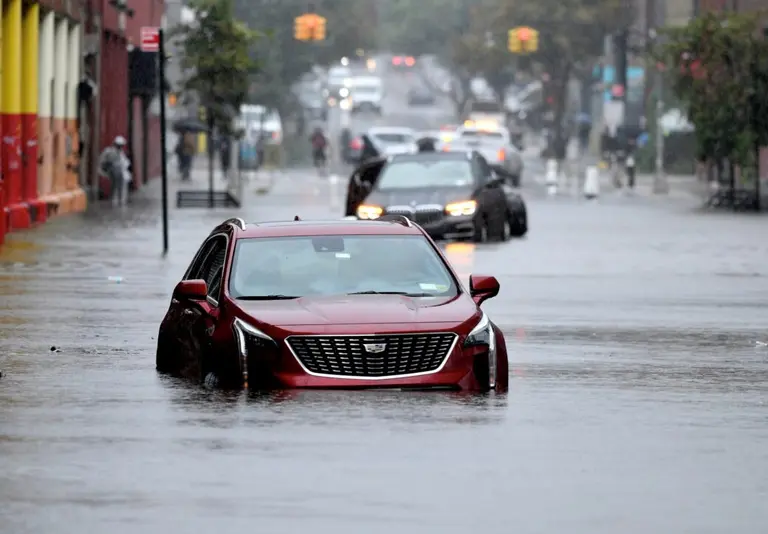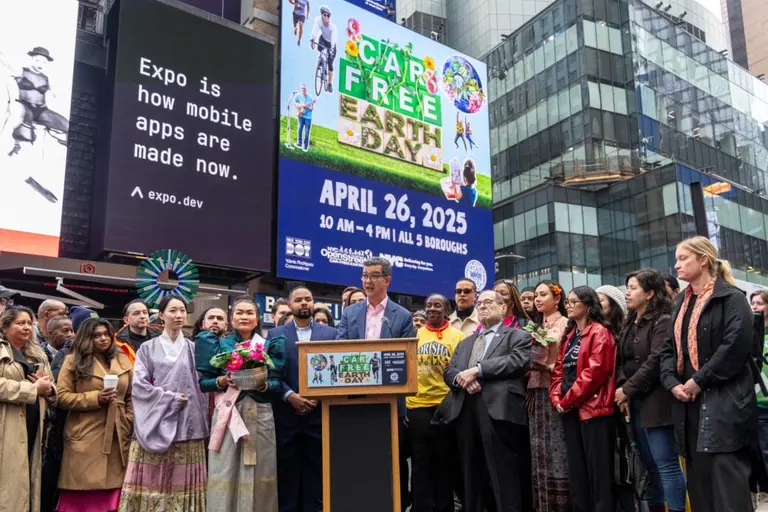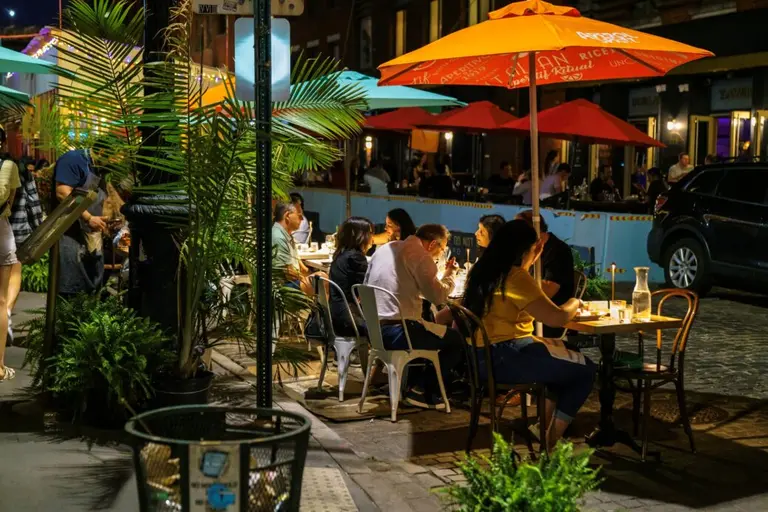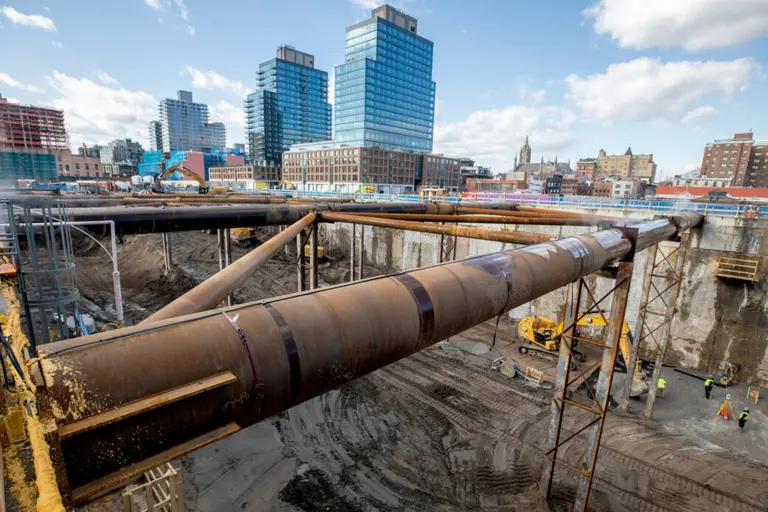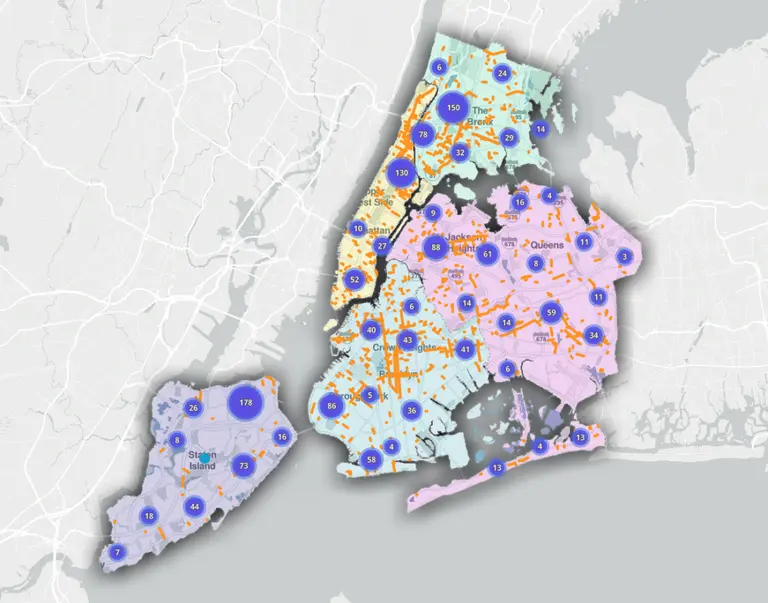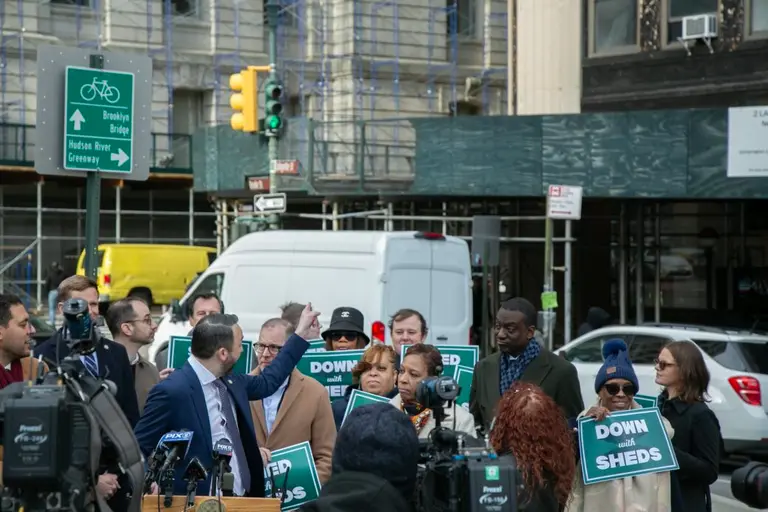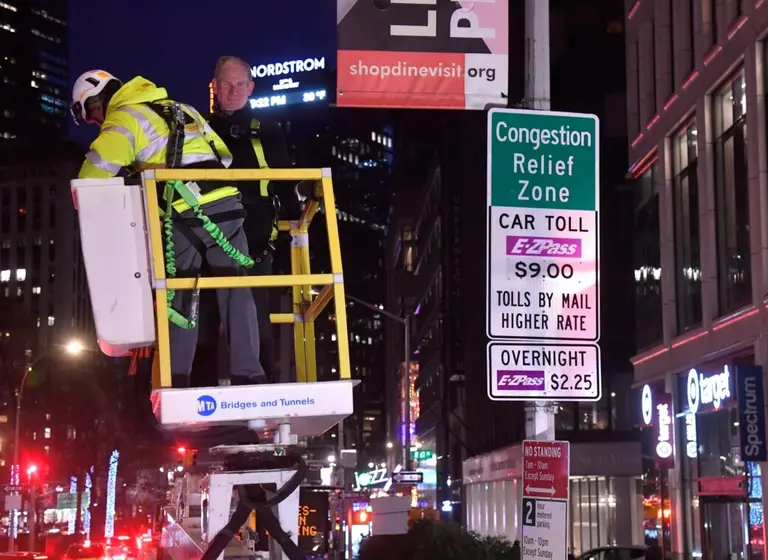NYC vaccination data shows ‘profound’ racial gaps
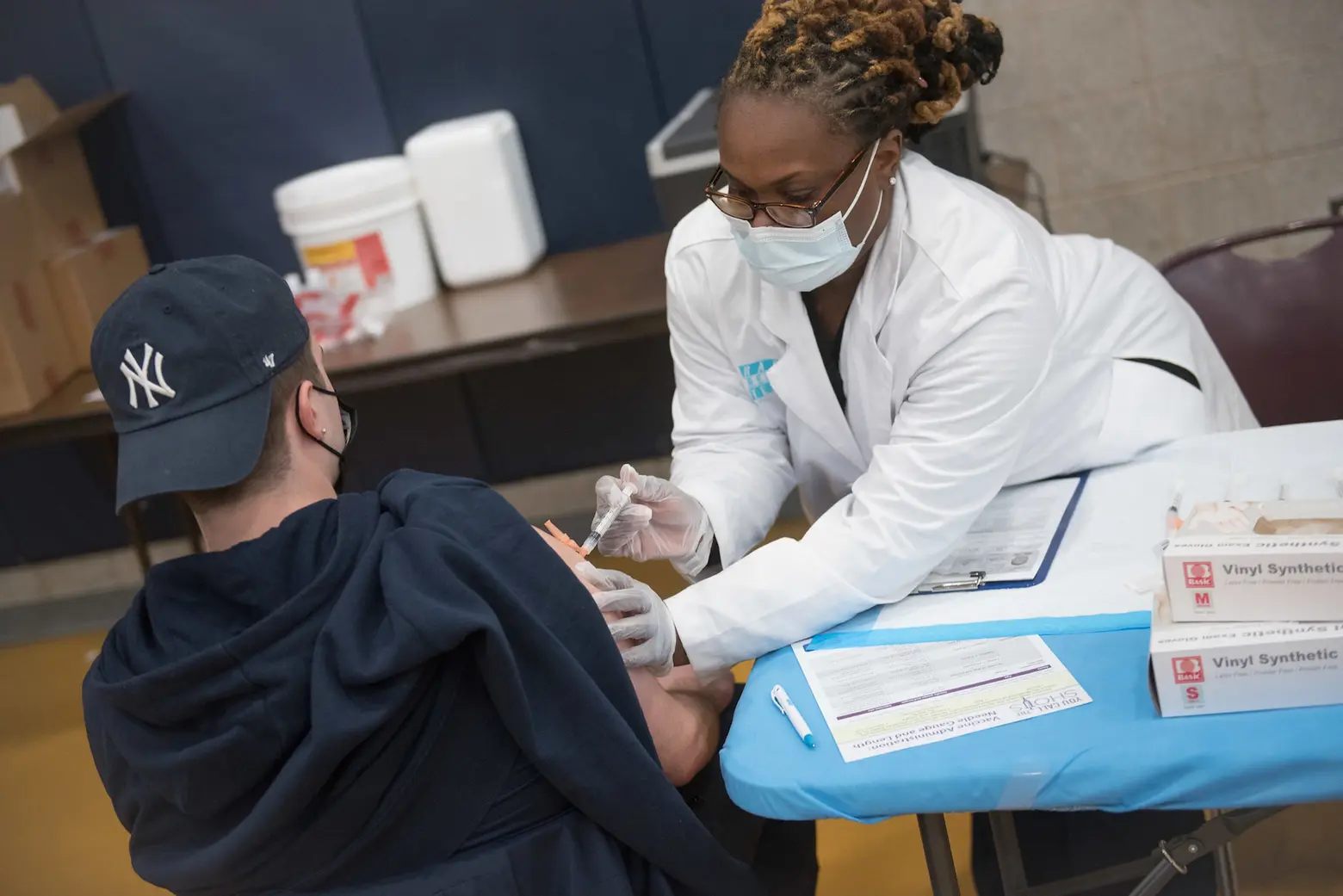
Vaccination center at NYCHA Van Dyke Houses in Brownsville, Brooklyn on Tuesday, January 19, 2021. Photo credit: Michael Appleton/Mayoral Photography Office on Flickr
Black and Latino residents in New York City have received far fewer doses of the coronavirus vaccine than white New Yorkers, according to preliminary data released by the city on Sunday. Of the roughly 300,000 city residents vaccinated with at least one dose, 48 percent of them were white, 15 percent Asian, 15 percent Latino, and 11 percent Black. Mayor Bill de Blasio called the racial disparities “profound,” since Latino and Black residents make up 29 and 24 percent of the city’s population, respectively.
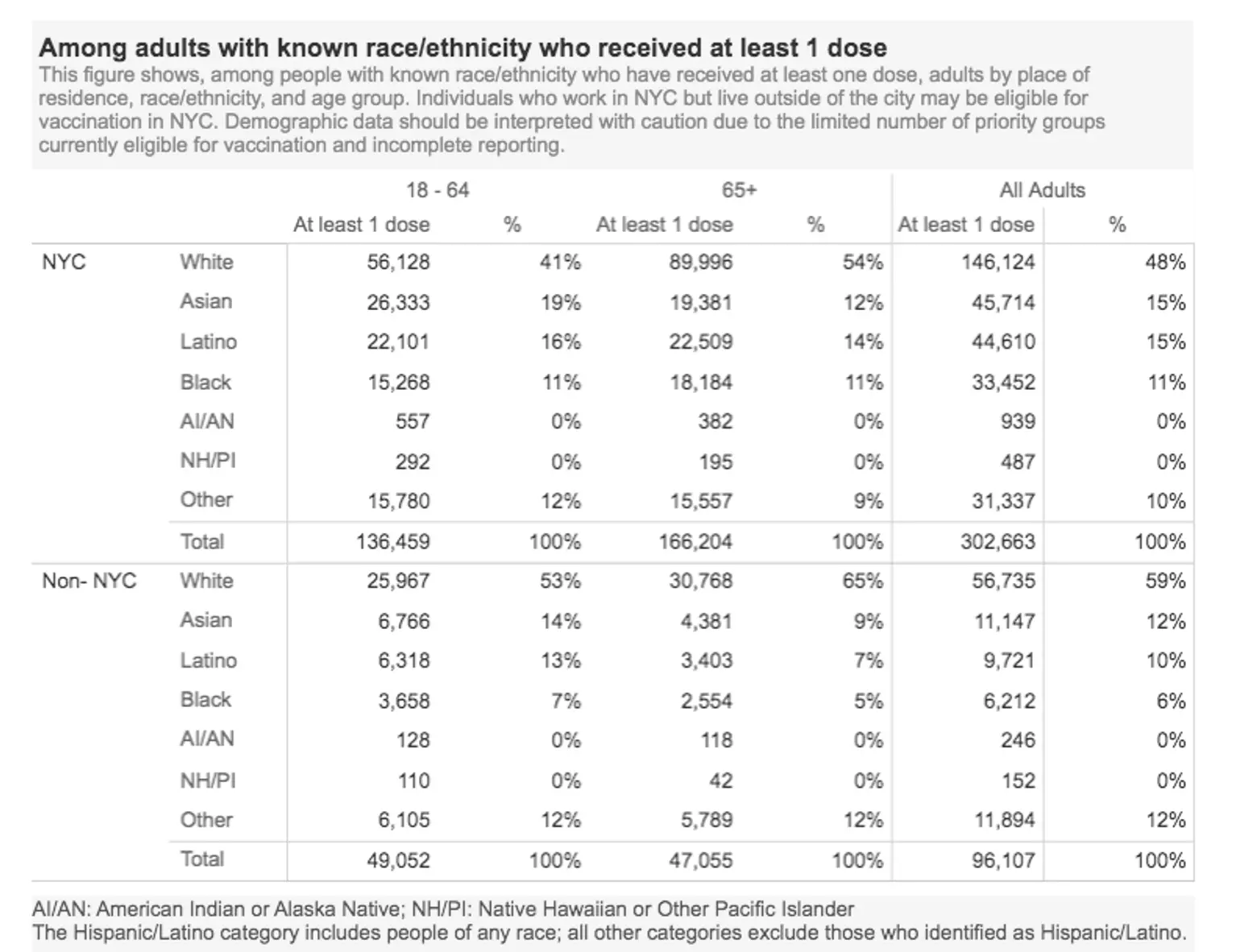
Courtesy of NYC Health COVID-19 vaccine data
This is the first data released by the city’s health department that breaks down vaccination rates by age and race. According to the data, over 96,000 first-dose vaccine recipients live outside of New York City. Of that number, the racial disparity is even more obvious, with white people accounting for 65 percent. Note that the city’s data are not complete because as many as 40 percent of vaccine recipients did not provide their race or ethnicity. The vaccination rollout began nearly two months ago.
During a press briefing on Sunday, de Blasio said there’s a problem “of distrust and hesitancy, particularly in communities of color,” referring to the racial gap in vaccination rates. “We’ve got a problem of privilege clearly where folks who have been privileged have been able to access the testing in some ways with greater ease,” the mayor said.
Since it began last spring, the pandemic has amplified existing disparities among low-income communities and communities of color. Latino and Black people in New York and across the country continue to face higher rates of death from COVID-19 than white people. Some public officials and advocates have been pushing for the city and the state to release the vaccination demographic breakdown, expecting the disparities that have now been proven.
Public Advocate Jumaane Williams on Sunday said this confirms that communities of color hit hardest by the virus now have the hardest time getting vaccinated. “Many of us knew this would be the case, and we know there are many contributing factors, from infrastructure inadequacy and technological failures to cultural hesitancy to longstanding healthcare privileges and disparities,” Williams said in a statement.
“We know too that the government – city, state, and federal – each had a role in creating this divide, and has a responsibility to equitably close it. There are no excuses and there can be no passing the blame at this point – supply may be a federal issue, but distribution decisions fall on our state and local executives.”
De Blasio on Sunday said the city will release additional data soon that will break down city vaccination rates by ZIP code. “Clearly, we do see a profound disparity that needs to be addressed aggressively and creatively,” the mayor said. “So, we’ll continue talking about both the data as it develops and the steps will be taken to address the disparity as we go along.”
The mayor on Sunday said the city will increase outreach and prioritize vaccination appointments for residents of 33 neighborhoods identified by the city as some of the hardest hit by the pandemic. For eligible essential workers in these 33 neighborhoods, the city plans to create “family plans,” allowing the workers to schedule appointments for eligible family members on-site.
According to the city’s vaccine tracker, 387,509 city residents and 126,054 non-NYC residents have received at least one dose, as of Monday. The city has administered a total of 815,193 doses of the vaccine.
RELATED:
